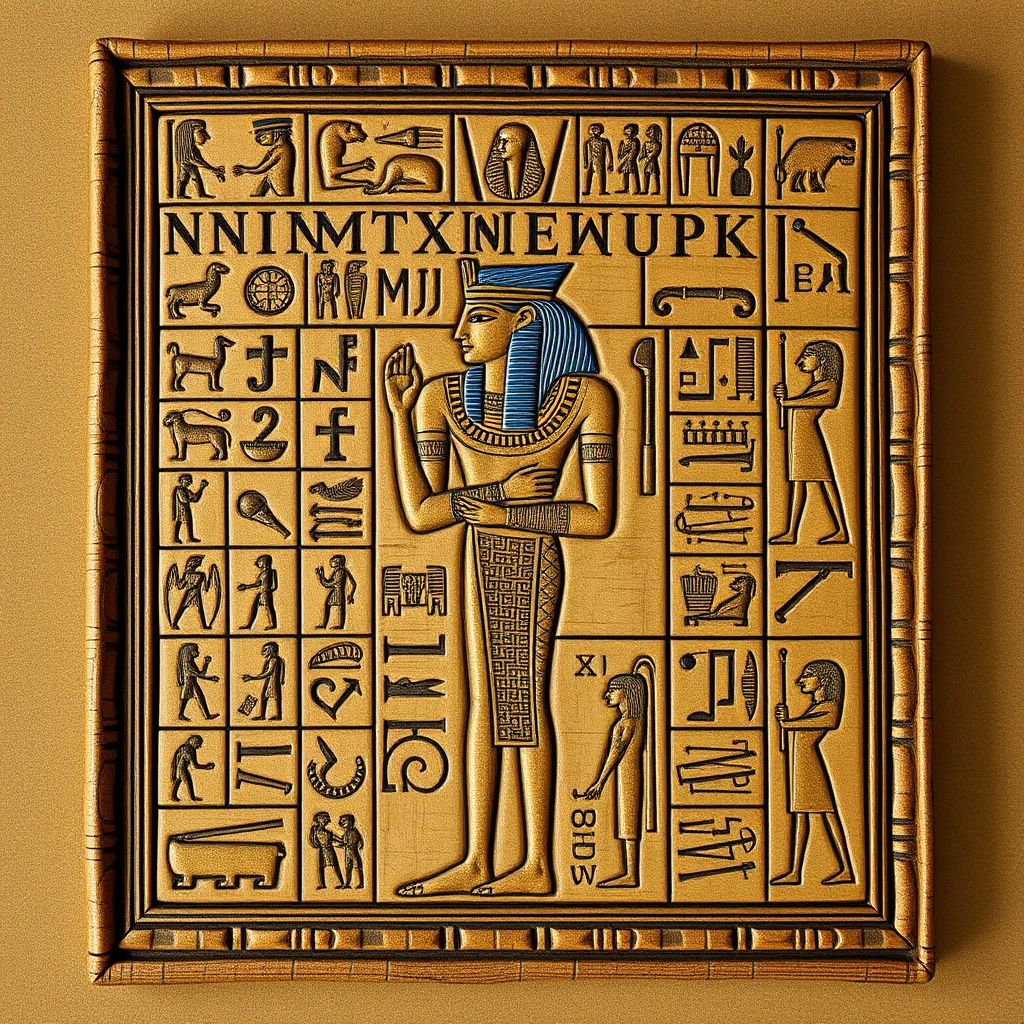The Book of the Dead: A Guide to Ancient Egyptian Hieroglyphs
I. Introduction to the Book of the Dead
The Book of the Dead, or “The Book of Coming Forth by Day,” is a collection of funerary texts that were used in ancient Egypt. It holds significant importance as it was believed to guide the deceased through the afterlife, ensuring their safe passage and eternal existence. This compilation of spells, prayers, and incantations provides insights into the beliefs, values, and practices of ancient Egyptian culture.
In ancient Egypt, the Book of the Dead played a crucial role in funerary practices, often inscribed on papyrus scrolls and placed in tombs alongside the deceased. This article aims to explore the historical context, hieroglyphic writing system, structure, and key themes of the Book of the Dead, along with techniques for deciphering hieroglyphs.
II. Historical Context of the Book of the Dead
The Book of the Dead did not emerge suddenly; it evolved over centuries, drawing from earlier texts and traditions. Its origins can be traced back to the Pyramid Texts of the Old Kingdom, which were exclusive to royalty, and the Coffin Texts of the Middle Kingdom, which included spells for a broader audience.
Key historical figures, such as priests and scribes, contributed to the development of the Book of the Dead during the New Kingdom (circa 1550-1070 BCE) when it became accessible to non-royal individuals. Notable periods include:
- Old Kingdom: Emergence of Pyramid Texts
- Middle Kingdom: Development of Coffin Texts
- New Kingdom: Formation of the Book of the Dead
When compared to other ancient Egyptian religious texts, the Book of the Dead stands out due to its focus on the individual’s journey after death and the personal nature of its spells.
III. Understanding Hieroglyphs
The ancient Egyptian writing system, known as hieroglyphics, consists of over 700 symbols that can represent sounds, ideas, or objects. Understanding the basics of this writing system is essential for interpreting the Book of the Dead.
Hieroglyphs can be classified into three main types:
- Phonetic: Symbols representing sounds, similar to letters.
- Logographic: Symbols representing entire words or concepts.
- Determinative: Symbols that provide context to a word but are not pronounced.
The importance of hieroglyphs in ancient Egyptian communication cannot be overstated. They were used in religious texts, monumental inscriptions, and everyday writing, serving as a key medium for cultural expression and record-keeping.
IV. Structure and Content of the Book of the Dead
The Book of the Dead is typically found in the form of scrolls made from papyrus, often measuring several meters in length. The scrolls are adorned with beautiful illustrations and iconography that complement the textual content.
Common spells found within the Book of the Dead include:
- The Spell for the Weighing of the Heart
- The Spell for Coming Forth by Day
- The Spell for Protection Against Snakes
Each spell served a specific function in aiding the deceased on their journey through the afterlife. The illustrations within the scrolls often depict scenes of the deceased interacting with deities, the judgment process, and representations of the afterlife.
V. Key Themes and Concepts
The Book of the Dead encompasses several key themes central to ancient Egyptian beliefs:
- The Afterlife: Central to the text is the notion of an afterlife where the soul continues to exist and is judged based on its earthly deeds.
- The Concept of Ma’at: This represents truth, balance, and order, and was crucial in the judgment of the dead.
- Judgment of the Dead: The weighing of the heart ceremony, where the heart of the deceased is weighed against the feather of Ma’at to determine their fate.
These themes reflect the values and beliefs that governed ancient Egyptian society, emphasizing morality, justice, and the importance of living a righteous life.
VI. Notable Figures and Deities in the Book of the Dead
The Book of the Dead features several notable figures and deities that play significant roles in the afterlife journey:
- Osiris: The god of the afterlife, resurrection, and agriculture, Osiris is often depicted as a mummified king.
- Anubis: The god of mummification and the afterlife, Anubis is portrayed as a jackal or a man with a jackal head, guiding souls in the afterlife.
- Thoth: The god of wisdom, writing, and knowledge, Thoth is often depicted as an ibis or a baboon, known for recording the outcomes of the judgment ceremony.
These deities symbolize the complex spiritual beliefs of ancient Egyptians regarding death and the afterlife.
VII. Deciphering Hieroglyphs: Techniques and Tools
Egyptologists have developed various methods to translate hieroglyphs, making significant progress in understanding ancient texts such as the Book of the Dead. Key techniques include:
- Contextual Analysis: Understanding the context in which hieroglyphs are used helps in translation.
- Comparative Study: Comparing different texts and inscriptions aids in deciphering meanings.
- Reference Materials: Using dictionaries and grammar guides specific to ancient Egyptian hieroglyphs.
Common hieroglyphs found in the Book of the Dead include symbols for life (ankh), truth (ma’at feather), and the heart (ib). For those interested in further study, resources such as books, online courses, and academic journals provide valuable information on hieroglyphic writing.
VIII. Conclusion
The Book of the Dead is not only significant for its role in ancient Egyptian culture but also for its insights into the human quest for understanding life, death, and the afterlife. Its hieroglyphic inscriptions offer a rich tapestry of beliefs that continue to fascinate scholars and enthusiasts alike.
The enduring legacy of hieroglyphs extends into modern culture, influencing art, literature, and even popular media. As we continue to uncover the meanings and significance of ancient texts, it is vital to preserve these historical treasures and acknowledge their impact on our understanding of humanity’s past.




